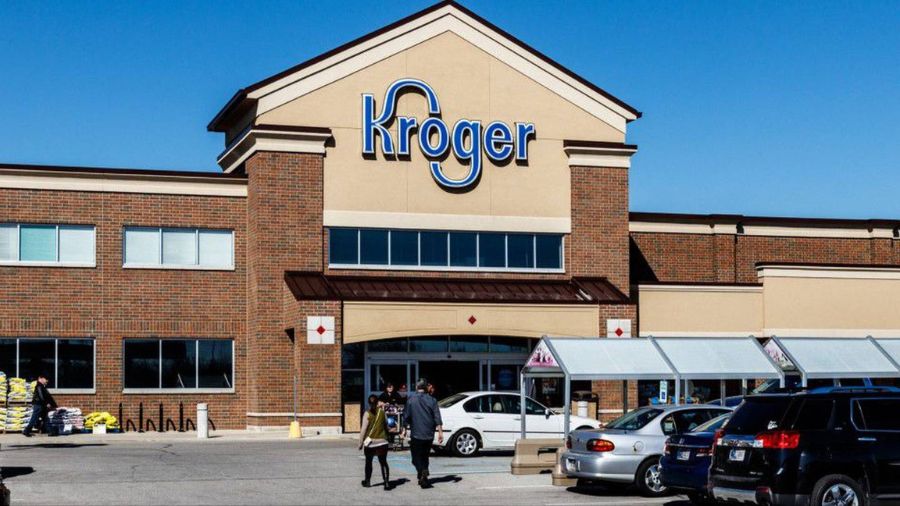All Over The Map: Before Seattle was dying, Stevens Pass was wicked
Apr 26, 2019, 9:48 AM | Updated: 10:24 am

The general location of Tunnel City is marked by the black circle on this old topographic map; the town was described as "the wickedest place on earth" circa 1900. (Base map from US Geological Survey)
(Base map from US Geological Survey)
There was once a community near Stevens Pass that The New York World newspaper called the “wickedest place on earth.”
First of all, Stevens Pass is not named for Territorial Governor Isaac Stevens. It’s actually named for John F. Stevens of the Great Northern Railway. He was the surveyor who mapped out that railroad’s route through the Cascades back in the 1890s, and, earlier, through the Rockies. The Great Northern Railway’s first route over Stevens Pass was completed in January 1893.
But that path had a lot of switchbacks that added several miles and several minutes to the trip from the Twin Cities to Puget Sound, so the Great Northern decided to build a nearly three-mile long tunnel to shorten the route.
Even before “Cascade Tunnel” construction began in early 1897, a community sprung up east of Stevens Pass, near what would become the east portal of the tunnel.
It was called “Tunnel City,” but was also known as “Tunnel” and “Cascade Tunnel.” The area was in a remote part of what was then Kittitas County, and it was patrolled by a deputy sent over from Ellensburg.
Later, it would become part of Chelan County when that entity was created in 1899.
The kids today might call the early months of the little tunnel town a “pop-up.” In fairly short order, there were merchants there, many who had relocated from nearby Leavenworth, selling all kinds of products and services to the rough and tumble tunnel workers.
Eventually, the town of Tunnel City developed a reputation as a temple of sin. A quick check of newspaper archives reveals the presence of at least four saloons by the spring of 1897.
Tunnel City was considered such a one-stop shopping center for vice, that a writer for a newspaper called The New York World penned a scathing profile of the place sometime in late 1899 or early 1900. In the piece, the writer purportedly described Tunnel City, with its booze, gambling, and sex trade, as “the wickedest place on earth.”
The story went viral — or, as viral, or maybe “bacterial” as a story could go circa 1900 — and was reprinted in newspapers around the United States, even as far away as London.
In June 1900, a man named Frank Reeves responded to the newspaper story with a written retort of his own (though it’s unclear where it was published).
Reeves appears to have been a civic-minded fellow. He may have lived in Tunnel City at the time the initial story was published; he later turns up in newspaper archives as a delegate to political conventions, and as a Wenatchee “real estate and mining broker.”
Reeves conceded that Tunnel City was “indeed, a wicked place,” but, he continued, this was “because conditions are favorable to the exposure of the rough side of life.”
Further, Reeves philosophized, “men and women are the same the world over — some are good, some are bad, others indifferent, none is absolutely spotless, and no one is entirely devoid of good.”
And, to put conditions in Tunnel City into perspective, Reeves suggested looking no further than that hypocritical hotbed of sin on the shores of Elliott Bay.
He was of course referring to “the metropolis of the state of Washington” – Seattle – which, Reeves wrote, “is so much tougher” than Tunnel City.
Take those “toughest of the Cascade toughs,” from Tunnel City, Reeves suggested, and they “are but mere infants when they get down on a tough street in Seattle, a city of churches, refinement and education, full of blue-coated policemen and guardians of public morals.”
Even then, it seems, journalism was rooted in the Eastern Washington versus Seattle rivalry, as well as good old-fashioned sensationalism. A cynic might point out that “Tunnel City is Wicked” could have been the circa 1900 equivalent of “Seattle is Dying.”
Either way, just a few weeks after Reeves’ piece was published, through divine intervention or maybe just because one of those “Cascade toughs” dropped his or her lit cigarette on the floor of wooden saloon or brothel, Tunnel City caught fire in late June 1900. Much of the place was, almost literally, wiped off the map.
By the time of the fire, tunnel construction was already ramping down — the tunnel would be in service by December 1900 — so Tunnel City was never quite what it was before. Records are sketchy, but it appears as if it was pretty much completely gone by 1910.
That original Cascade Tunnel remained in service until January 1929 when the new and improved and much longer eight-mile-long Cascade Tunnel opened. The “new” tunnel is now more than 90 years old, and it remains in service as part of the BNSF Railway, carrying freight and passengers over Stevens Pass.
Nothing remains of the actual site of Tunnel City, which is located on National Forest land off a road called Lichtenburg Place — part of the old Stevens Pass highway — on the north side of Highway 2 east of the Stevens Pass ski area.
The old tunnel was accessible via the Iron Goat Trail as recently as 2006, when a portion of the ceiling collapsed. It is no longer open to the public.
Railroad history buffs will point out that there was another earlier Tunnel City in the Cascades at the east end of the Stampede Tunnel, built by the Northern Pacific over Stampede Pass. That community dates to around 1886, and was alternately known as Martins.
Nowadays, it seems, whether at Stampede Pass or Stevens Pass, whatever happens in Tunnel City, stays in Tunnel City.













